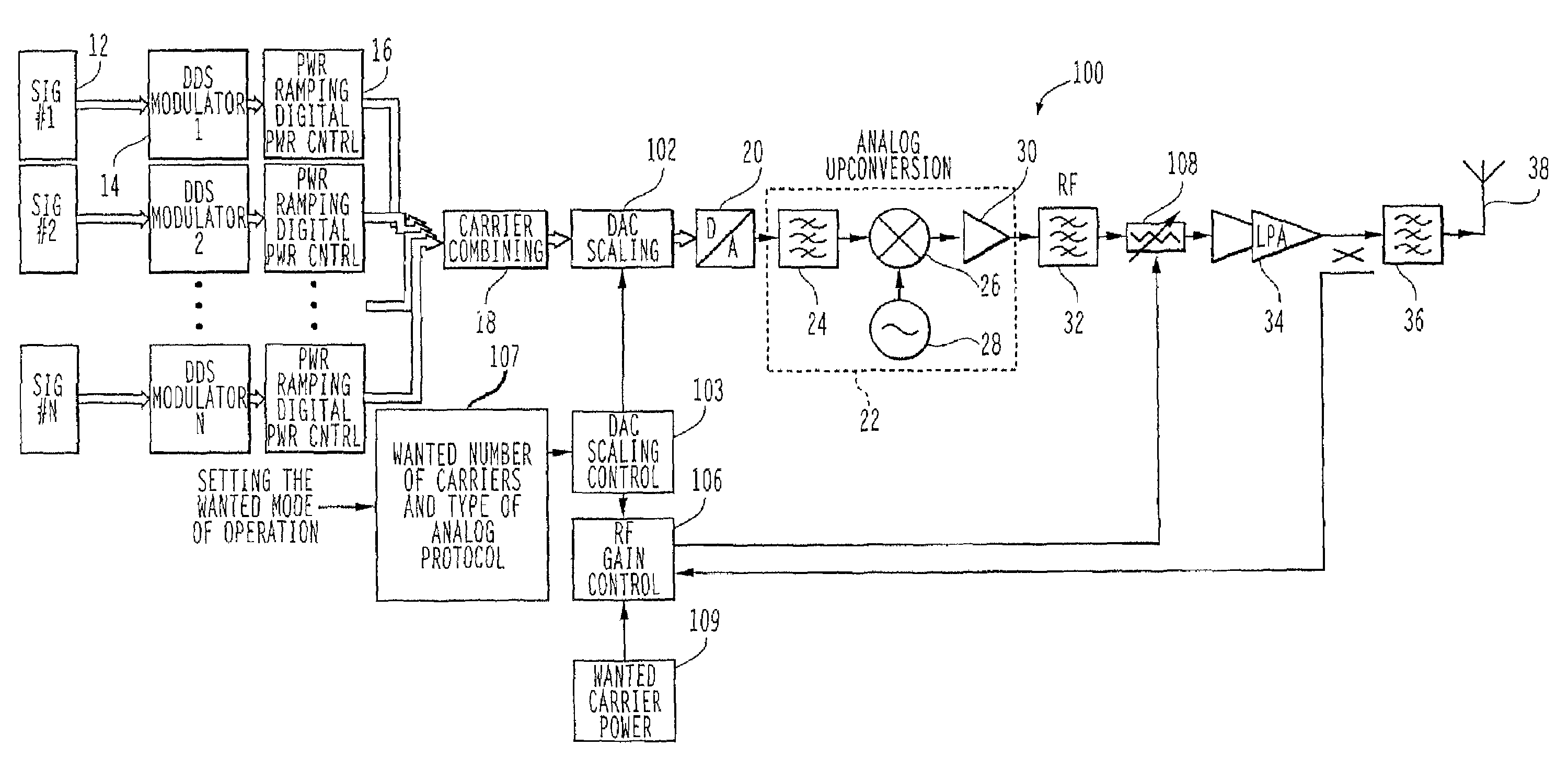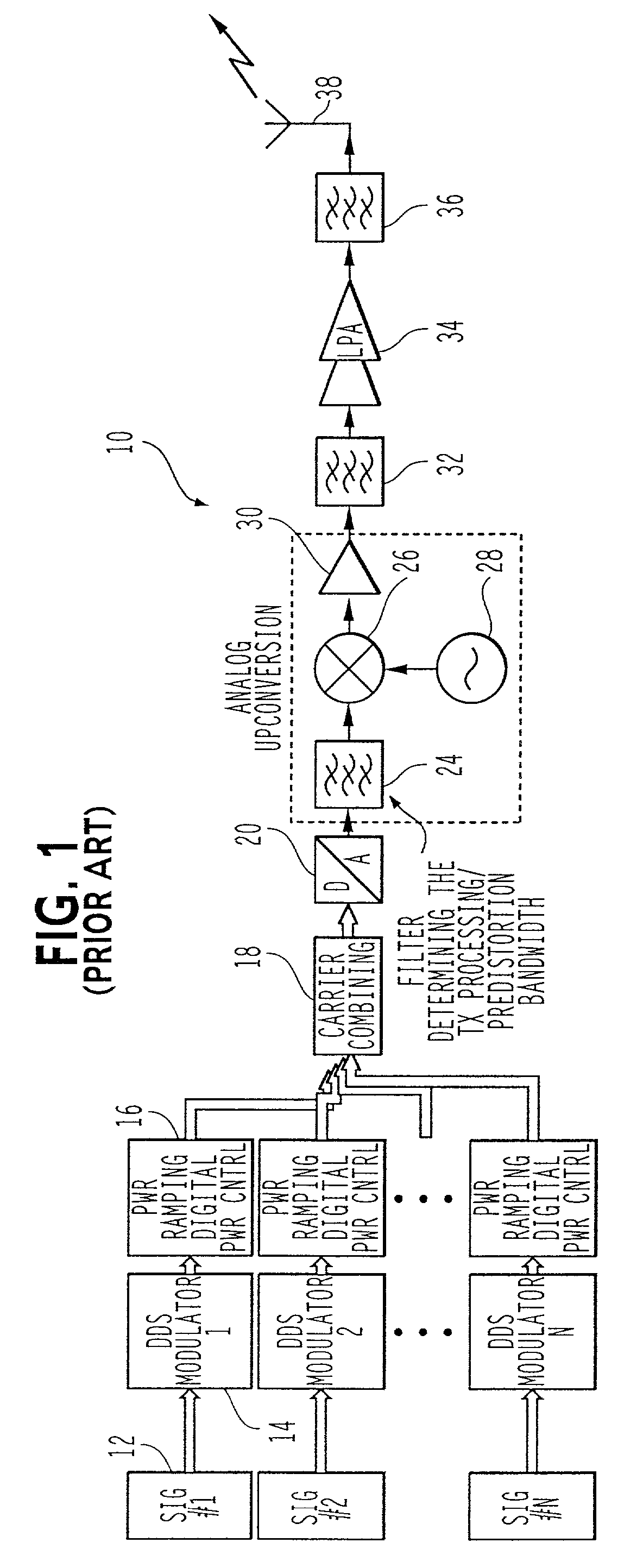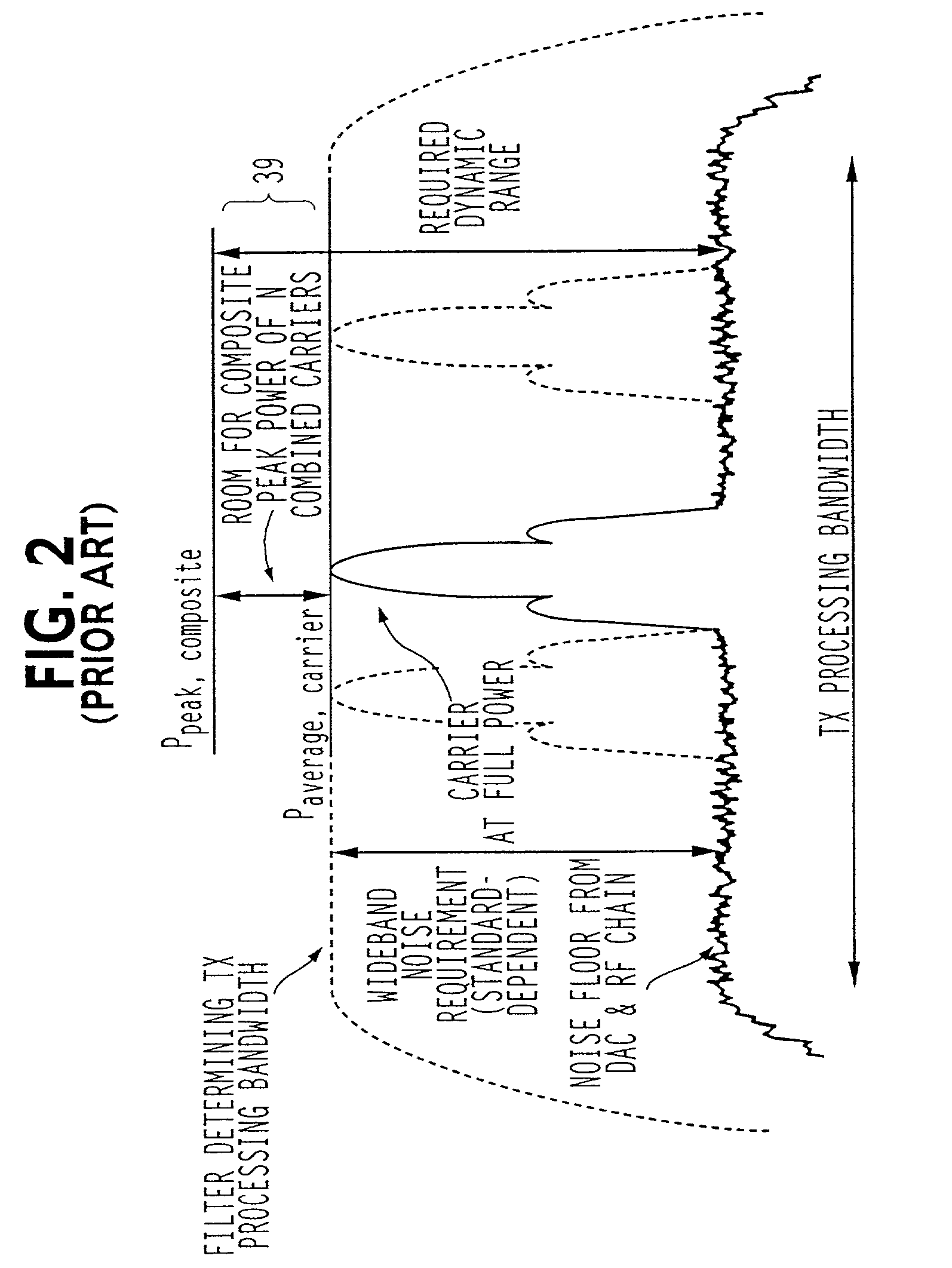Method and system having capacity-dependent baseband gain and coverage-capacity swapping in a multi-carrier base station transmitters
a base station transmitter and multi-carrier technology, applied in multi-frequency code systems, power management, wireless communication, etc., can solve the problems of carrier transmission posing difficult requirements regarding the dynamic range of the transmitter, the inability to reject noise inside the processing bandwidth by analog filtering, and the digital to analog conversion
- Summary
- Abstract
- Description
- Claims
- Application Information
AI Technical Summary
Benefits of technology
Problems solved by technology
Method used
Image
Examples
Embodiment Construction
[0027]FIG. 4 illustrates a block diagram of an embodiment 100 of the present invention. A digital to analog converter scaling function 102, is placed in front of the digital to analog converter 20 in the transmitter chain to adjust the signal level of the composite digital signal produced by the signal combiner. The scaling function 102 may without limitation be a multiplier, as illustrated in FIG. 5, a five-bit multiplier as illustrated in FIG. 6, a multiplier with a multiplexer bypass in FIG. 7 which permits the multiplication function of FIG. 5 to be selectively disabled so that the input signal to the digital to analog converter 20 is unchanged or a bit shifter 300 as illustrated in FIG. 8. The digital scaler 102 receives as an input the combined digital carrier signals produced by the signal combiner 18. The digital to analog converter 20 has a dynamic range which converts a specified maximum number of bits, such as 12 bits, into the corresponding analog output signal. As descr...
PUM
 Login to View More
Login to View More Abstract
Description
Claims
Application Information
 Login to View More
Login to View More - R&D
- Intellectual Property
- Life Sciences
- Materials
- Tech Scout
- Unparalleled Data Quality
- Higher Quality Content
- 60% Fewer Hallucinations
Browse by: Latest US Patents, China's latest patents, Technical Efficacy Thesaurus, Application Domain, Technology Topic, Popular Technical Reports.
© 2025 PatSnap. All rights reserved.Legal|Privacy policy|Modern Slavery Act Transparency Statement|Sitemap|About US| Contact US: help@patsnap.com



